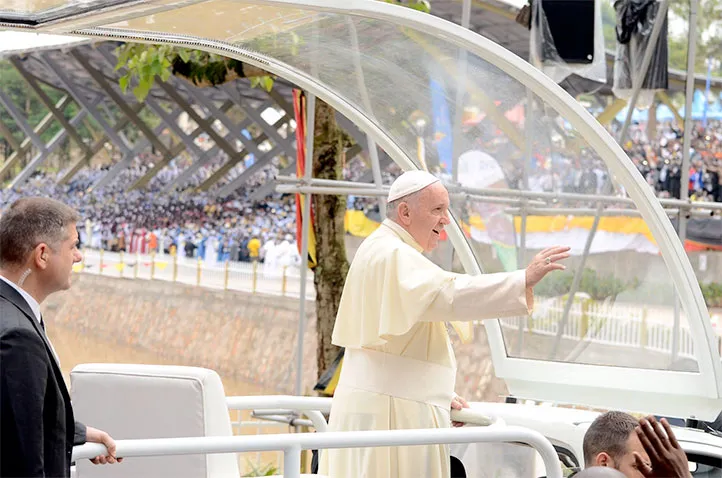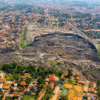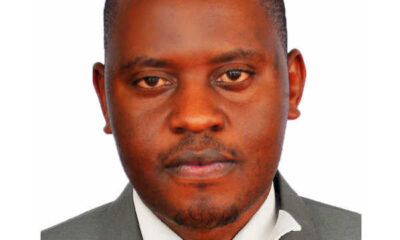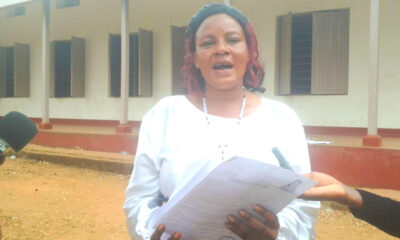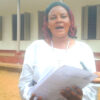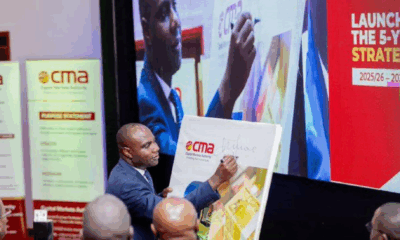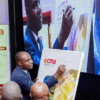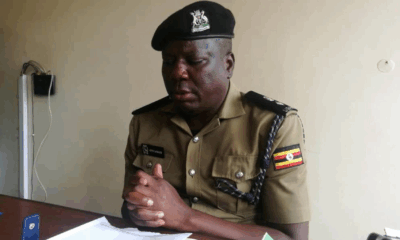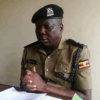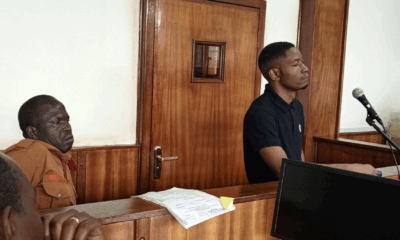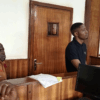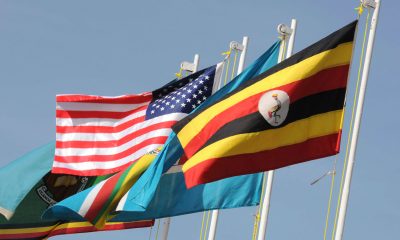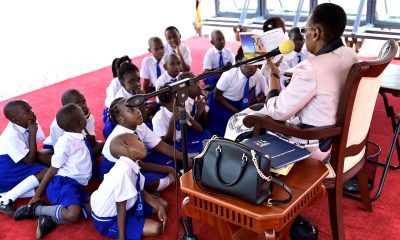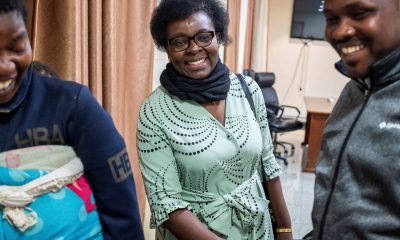News
When Pope Francis visited Uganda in 2015
“Omukama Abawe Omukisa”, literally, “May the Lord bless you”.
These were the final words spoken by Pope Francis as he concluded his historic visit to the Namugongo Martyrs Shrine in November 2015. Nearly a decade after this unforgettable pilgrimage, the news of his passing on April 21, 2025, has left the world in mourning, with millions reflecting on his profound legacy of faith, compassion, and service to the Church.
The Vatican confirmed that Pope Francis died peacefully at 7:35 am local time, marking the end of a historic papacy that touched millions across the globe.
“The Bishop of Rome, Francis, returned to the house of the Father,” Cardinal Kevin Joseph Farrell said in a statement. “His entire life was dedicated to the service of the Lord and His Church,” he added.
As Camerlengo, or chamberlain, Cardinal Farrell is responsible for announcing the pope’s death. This role is part of his broader duties in managing the affairs of the Holy See during the sede vacante, the period between papacies, ensuring the smooth transition of power within the Vatican.
Francis’s death follows a life of deep devotion, one that was particularly meaningful to the people of Uganda, where his visit in 2015 remains etched in the hearts of many.
“I saw him with my own eyes,” proudly recalled Alex Mukwaya, a churchgoer at Lubaga Cathedral, upon hearing of Pontiff’s passing.
Mukwaya fondly remembers attending Mass at Namugongo as a young schoolboy during the Pope’s visit, an experience that has stayed with him as one of his most cherished memories. Just like Mukwaya, many others who had the privilege of witnessing the Pope’s visit share the same sentiment.
For many, the memory remains vivid, and some still keep photos and souvenirs from the visit in their homes to this day, as treasured mementoes of a historic moment. Pope Francis’s visit to Uganda from November 27–28, 2015, was a moment of profound spiritual significance.
Arriving from Nairobi, Kenya, he became the third Pontiff to visit Uganda, following in the footsteps of Pope Paul VI in 1969 and Pope John Paul II in 1993. The visit was part of a broader African pilgrimage, marking his first journey to the continent as the first Jesuit pope and the first pope from the Southern Hemisphere.
From the moment he stepped onto Ugandan soil, Pope Francis was welcomed by a jubilant, united nation. Regardless of religious background, crowds lined the streets in overwhelming numbers, waving flags, singing hymns, and straining for a glimpse of the Holy Father.
His presence united the people of Uganda in faith, joy, and spiritual renewal. The pinnacle of Pope Francis’s visit was his Mass at the Namugongo Martyrs Shrine, where he honored the 22 young Ugandan Catholic Martyrs executed in the late 1800s for refusing to renounce their faith.
His visit coincided with the 50th anniversary of their canonization by Pope Paul VI in 1964. During his homily, Pope Francis spoke powerfully of the martyrs’ enduring witness.
“Worldly pleasures and earthly power do not bring lasting joy or peace. Rather, fidelity to God, honesty, and integrity of life, and genuine concern for others bring us that peace which the world cannot give.”
His words resonated deeply with the people of Uganda, inspiring them to live out the martyrs’ legacy through justice, compassion, and service to the poor.
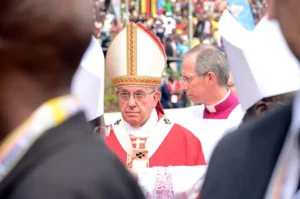
Pope-Francis-in-a-procession-with-other-bishops-at-Namugongo
His final public words at Namugongo, “Omukama Abawe Omukisa” or “May the Lord bless you”, spoken in Luganda at the conclusion of the visit, left a lasting emotional imprint on the thousands gathered at Namugongo, symbolizing the deep connection he had with the Ugandan people.
Pope Francis’s visit was also marked by his call to action for the marginalised. At Nalukolongo, one of Kampala’s most underserved neighbourhoods, he issued a heartfelt appeal: “Do not forget the poor.”
He decried the growing culture of indifference, especially toward the elderly, the unborn, and youth exploited by human trafficking.
“The gospel commands us to go out to the peripheries of society, and to find Christ in the suffering and those in need,” he said. “The Lord tells us, in no uncertain terms, that is what he will judge us on.”
His words urged Ugandans to build a society rooted in justice, human dignity, and care for the most vulnerable. Nalukolongo has never forgotten Pope Francis’s visit. At the very spot where he first set foot after disembarking from his vehicle, a special marker was placed to commemorate the moment.
This site, which was opened by the late Emmanuel Cardinal Nsubuga, who is buried nearby, holds deep significance for the community. The “Papal Footprint,” located in front of the chapel in the area, is carefully preserved and shown to every visitor, serving as a lasting reminder of the Holy Father’s visit to the sacred ground.
Inspiring the youth of Uganda
Pope Francis also met with President Yoweri Museveni and other dignitaries at State House in Entebbe, where he praised Uganda’s leadership in hosting refugees from neighbouring conflict zones. But, the Pope’s message to Uganda’s youth was particularly moving.
During his address to nearly 10,000 young people at Kololo Ceremonial Grounds, he spoke with passion about the future of the nation.
“Dear young friends, when I look at your faces, I am filled with hope… Don’t forget to be messengers of that hope! And don’t forget that God will help you to cross whatever puddles you meet along the way!” he said.
He further urged them to grow in wisdom, generosity, and goodness, becoming agents of change in their country and the world. At an interfaith gathering, Pope Francis watered an “ecumenical tree,” a symbolic gesture of unity among Christians.
He described Uganda as a “continent of hope,” recognising the strength of its youth, families, and natural resources, and the richness of its spiritual heritage. During his visit, Pope Francis also honoured the martyrs at the burial site at Anglican shrine and opened the Uganda Martyrs Museum, a site where their sacrifice continues to be remembered and revered.
The museum was a brainchild of Archbishop Livingstone Mpalanyi Nkoyoyo. The late Archbishop Dr Cyprian Kizito Lwanga played a pivotal role in initiating the visit, having discussed the possibility with Pope Francis during a private audience in 2013.
His efforts paved the way for what became one of the most spiritually significant events in Uganda’s recent history. Though a planned return visit by Pope Francis in recent years was eventually called off, his 2015 pilgrimage left a deep mark on the people of Uganda and the global Catholic community.
His words, his witness, and his call for social justice continue to resonate today, especially as his passing marks the end of a papacy defined by humility, compassion, and advocacy for the poor.
As Ugandans and Catholics around the world mourn the loss of Pope Francis, they also remember the powerful messages he shared during his visit: to serve the poor, to embrace hope, and to live lives of justice and dignity. His legacy remains alive in the hearts of millions, and his call to action will continue to inspire future generations.
************Adopted from URN*************
Comments



